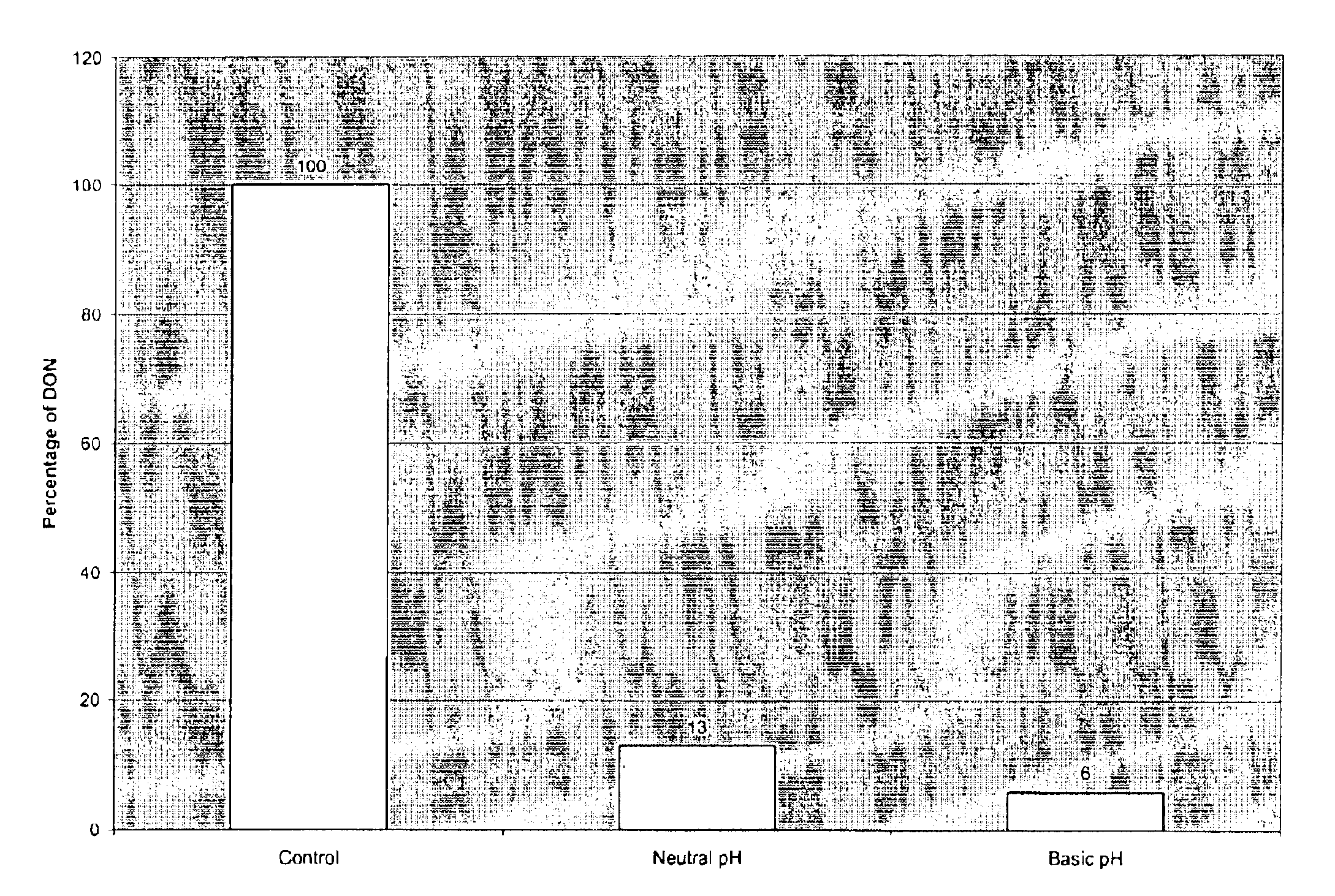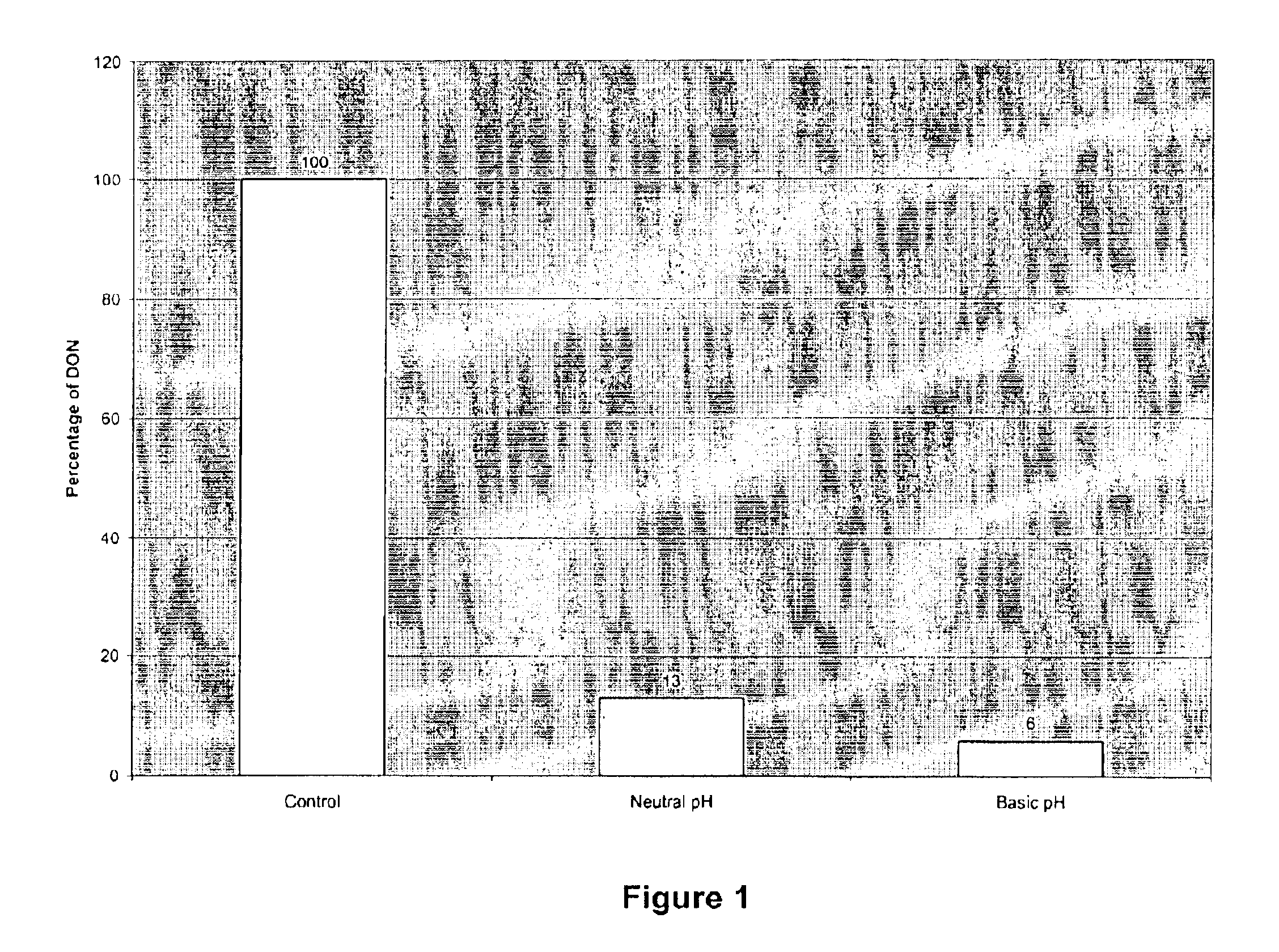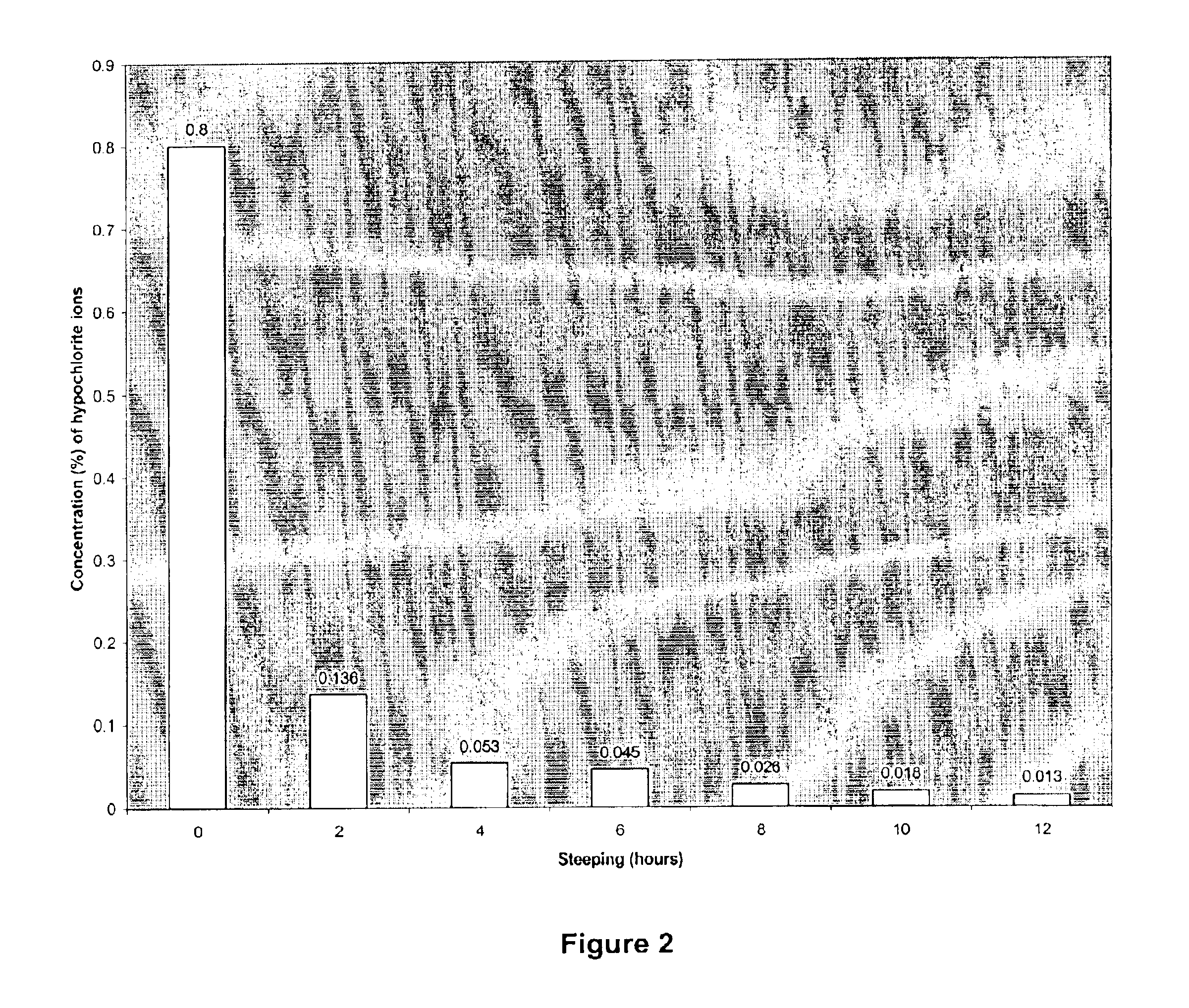Process to improve the quality of grains and seeds
a technology of grain and seed, applied in the field of process to improve the quality of grains and seeds, can solve the problems of reducing feed intake and weight gain of livestock, reducing reproductive efficiency, and demonstrating the development of fully resistant varieties. , to achieve the effect of increasing the germination rate of grains or seeds
- Summary
- Abstract
- Description
- Claims
- Application Information
AI Technical Summary
Benefits of technology
Problems solved by technology
Method used
Image
Examples
experimental examples
[0042]Experimental data for reducing toxins, improving color, killing fungi and bacteria in seeds as well as increasing their germination are presented below.
example 1
Determination of the Best Time and Concentration for Hypochlorite to Control Fusarium and Reduce its Toxin in Barley Seeds
[0043]In this example, the experimental conditions were tested in order to determine the best time and concentration of hypochlorite to control Fusarium and to reduce its toxin in barley seeds. The conditions in Table 1 below indicate the initial hypochlorite concentration and the final concentration, the initial pH, and the period of time that the barley was in the solution. In this table, A, B, C, D and E mean hypochlorite concentrations of 0.1, 0.5, 1.0, 2.0 and 4.0% (commercial product) and W mean water steeping only. These results indicate that most of the hypochlorite ions react soon after the seeds are put in contact with the solution. It is also shown that the amounts of the hypochlorite ions left in the solutions after removing the seeds are very small or negligible.
[0044]
TABLE 1Chemical conditions of the solutions before and after submitting thebarley s...
example 2
Testing Other Chemicals in Combination with Hypochlorite
[0048]This experiment tested whether it was beneficial to add additional chemicals to the hypochlorite solution. The time used in this test was 8 hours. After the barley was treated, experiments were performed to determine if the barley was still capable of germination, and whether or not Fusarium graminearum and / or bacteria were still present on the seeds. Evaluation was done by plating 50 seeds per treatment onto PDA growth medium. Also, the level of toxin (DON) was tested after the treatments. The results are provided in Tables 3 and 4.
[0049]These results indicate that the combination of the compounds sodium hydroxide, glacial acetic acid and peracetic acid to the hypochlorite solution can improve the performance of hypochlorite solution. By far most of the effect, however, is due to the hypochlorite solution alone. It should be noticed that the other chemicals alone do not provide good results.
[0050]
TABLE 3Mean of germinati...
PUM
 Login to View More
Login to View More Abstract
Description
Claims
Application Information
 Login to View More
Login to View More - R&D
- Intellectual Property
- Life Sciences
- Materials
- Tech Scout
- Unparalleled Data Quality
- Higher Quality Content
- 60% Fewer Hallucinations
Browse by: Latest US Patents, China's latest patents, Technical Efficacy Thesaurus, Application Domain, Technology Topic, Popular Technical Reports.
© 2025 PatSnap. All rights reserved.Legal|Privacy policy|Modern Slavery Act Transparency Statement|Sitemap|About US| Contact US: help@patsnap.com



